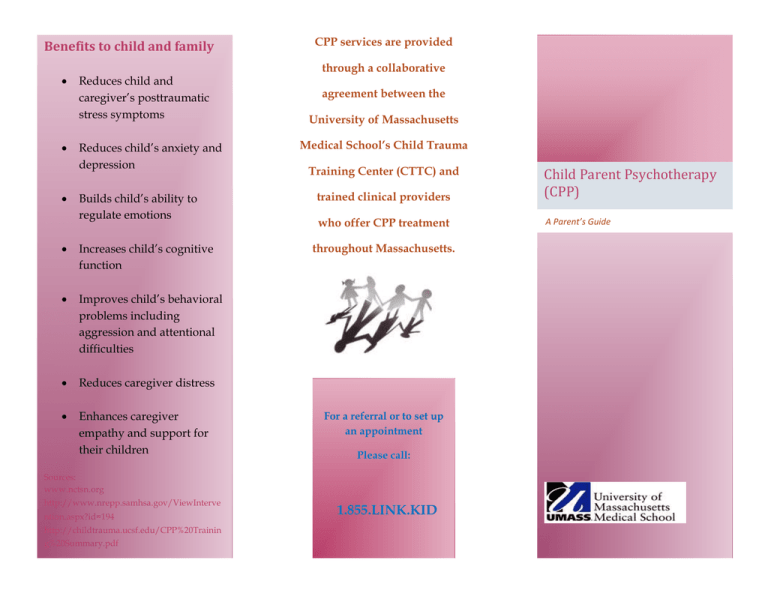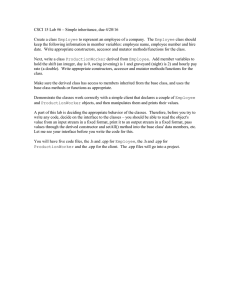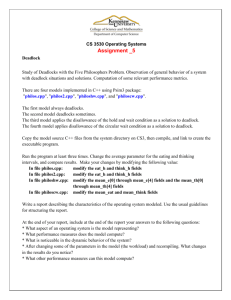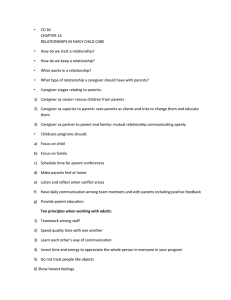Benefits to child and family
advertisement

Benefits to child and family Reduces child and caregiver’s posttraumatic stress symptoms Reduces child’s anxiety and depression Builds child’s ability to regulate emotions Increases child’s cognitive function Improves child’s behavioral problems including aggression and attentional difficulties Reduces caregiver distress Enhances caregiver empathy and support for their children CPP services are provided through a collaborative agreement between the University of Massachusetts Medical School’s Child Trauma Training Center (CTTC) and trained clinical providers Child Parent Psychotherapy (CPP) who offer CPP treatment A Parent’s Guide throughout Massachusetts. For a referral or to set up an appointment Please call: Sources: www.nctsn.org http://www.nrepp.samhsa.gov/ViewInterve ntion.aspx?id=194 http://childtrauma.ucsf.edu/CPP%20Trainin g%20Summary.pdf 1.855.LINK.KID Why choose CPP? The CPP model understands that each child is unique and therefore therapy is tailored to the child’s age and developmental status. Research supports that the CPP model is more effective than therapy as usual for traumatized children. Children and caregivers showed What happens in CPP? significant improvement in postDealing with trauma is hard. Each trauma is unique. Caregivers want to offer the best support they can for a child, but sometimes it’s hard to know where to start. What is CPP? CPP stands for Child Parent Psychotherapy. traumatic stress reduction, and children showed improvement in behavior and attachment It is a type of intervention designed for young children who have experienced traumatic life events. It focuses on the way these traumatic events have impacted the child and caregiver relationship and seeks to improve the relationship between caregiver and child while restoring the child’s sense of safety and overall functioning. Who can use CPP? CPP is designed for young children between the ages of 0 and 5 who have significant emotional and behavioral problems related to a traumatic event or a series of traumatic events. Treatment involves weekly hour long sessions with parent or caregiver and child. The length of treatment varies, but on average lasts about one year. The treatment varies depending on the child’s age and developmental level. Treatment in infants might focus on helping the caregiver understand what the caregiver and child have gone through and how this might affect the child’s behavior and development. Treatment for toddlers and preschoolers might include a more active component for the child including play as a means of communication. The main goal is to strengthen the caregiver – child relationship. What results will I see? Children and caregivers receiving CPP experience improvement in: Behavioral problems Post-traumatic stress disorder Emotion regulation Cognitive functioning Caregiver empathy





